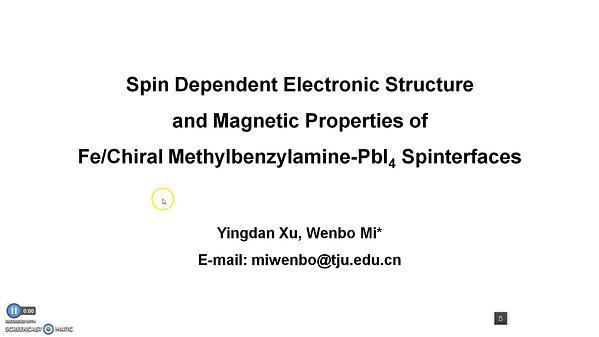
Premium content
Access to this content requires a subscription. You must be a premium user to view this content.

technical paper
Field free switching of perpendicular magnetization by spin
Spin-orbit torques (SOTs) originating from a ferromagnetic spin source have attracted much attention for spintronics devices because they offer field-free switching of perpendicular magnetization 1. Cobalt-based Heusler alloy Co2MnAl (CMA) is attractive for the ferromagnetic spin source because it is theoretically predicted to be a magnetic Weyl semimetal with strong spin-orbit interaction 2. In this work, we demonstrated SOT-induced magnetization switching for a perpendicularly magnetized CoFeB (CFB) under zero magnetic field by using an in-plane magnetized CMA spin source. We also measured modulation of coercive field by the SOTs and investigated the effective perpendicular magnetic field Heff induced by them.
A heterostructure consisting of, from the substrate side, MgO(10)/CMA(5)/Ti(3)/CoFeB(1.2)/MgO(3)/Ta(1) was deposited on an MgO(100) substrate (numbers in parentheses are nominal thickness in nm). Then, the stack was processed into Hall-bar devices with a 5-μm-wide channel. From measurements on transverse resistance Ryx reflecting the anomalous Hall effect (AHE), the CFB layer showed a clear perpendicular magnetic easy axis, whereas the CMA had an in-plane magnetic easy axis. After aligning magnetization of CMA, MCMA, to parallel or antiparallel to the channel direction, we studied SOT-induced magnetization switching of CFB layer by applying current pulses Ipulse to the channel in the absence of magnetic field. Clear field-free switching of CFB magnetization was observed in both cases. The polarity of SOT-induced magnetization switching with respect to Ipulse was reversed depending on the relative direction of MCMA to Ipulse (Fig. 1). Furthermore, we investigated Heff induced by SOTs with Heff = Hc(+I) - Hc(-I)/2, where Hc(I) is a coercive field determined from AHE measurements, and I is a channel current. We observed sizable effective field of μ0Heff = 1 mT at I = 3 mA. Importantly, the sign of Heff was also reversed depending on the relative direction of MCMA to I. These results suggest that the possible origin of the SOTs is spin-orbit precession 1.
References 1 S. C. Baek et al., Nat. Mater., Vol. 17, p.509 (2018)
2 J. Kübler, C. Felser, EPL, Vol. 114, 47005 (2016)


